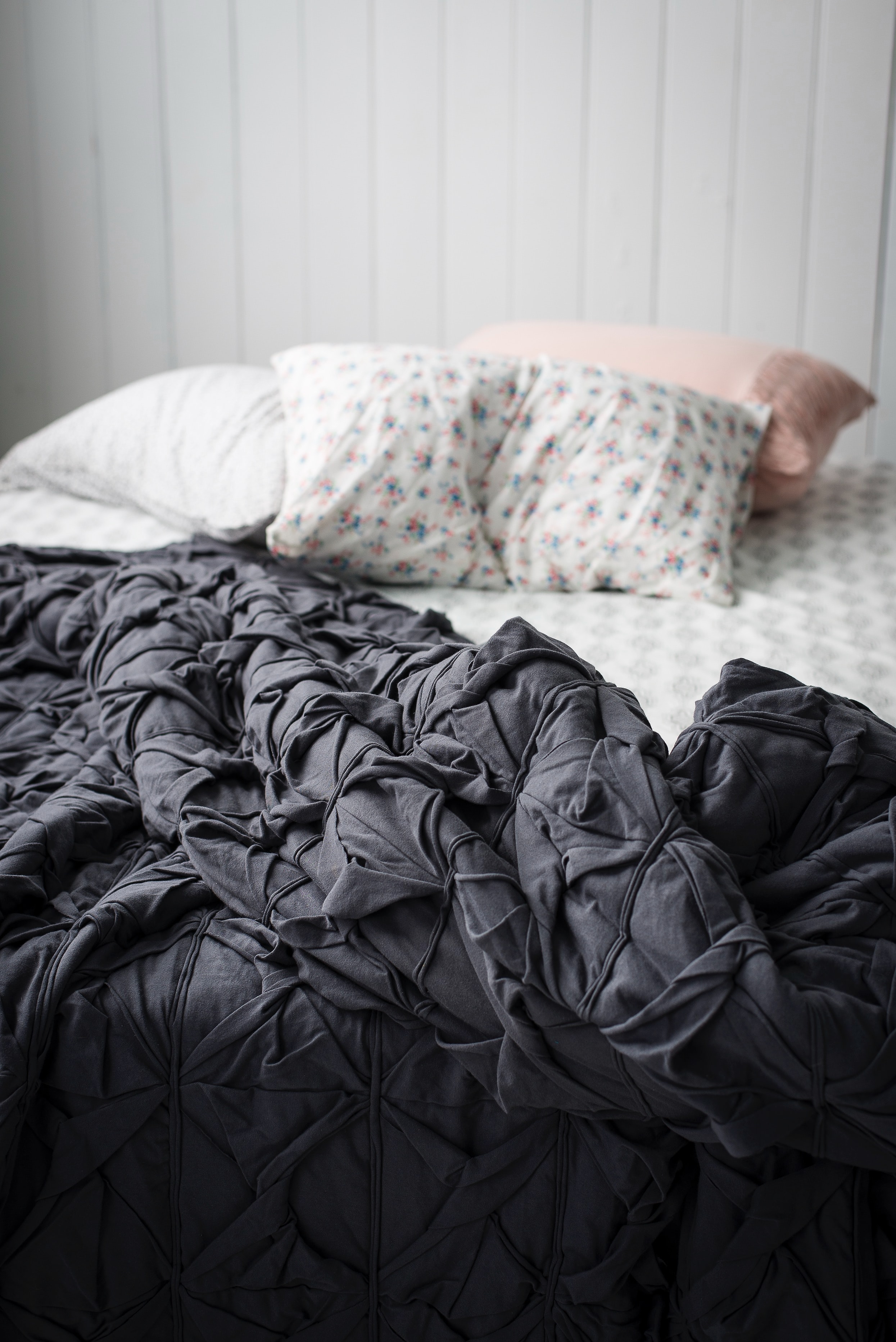
Duvet care and cleaning - can you wash a duvet?
Learn moreA duvet can be the determining factor in a good night’s sleep. Serving to provide us with an additional level of warmth, cosiness and comfort, this all-important sleeping aid needs to be in peak condition to help us fall asleep peacefully.
We all know that our sheets and linen need to be regularly washed on a week-by-week basis to maintain a good level of hygiene. But did you know that you can (and should) also wash your duvet and quilts to prevent infection and disease?
In this guide we’ll assess how often to wash your bedding, as well the best methods and the impact of letting it go uncleaned for a long period of time.

Chapter 1
What happens when you don’t wash a duvet
As you might imagine, failing to properly clean your bedding can result in some pretty nasty and unwanted side-effects. And while dirt is sometimes harder to notice on a duvet than on bed sheets, it doesn’t mean it isn’t still there.
Some of the biggest problems a person with a dirty duvet can face are:
Skin conditions. We all sweat when we sleep, which leaves unseen stains on our sheets and duvets. These patches are a breeding ground for bacteria, some of which can cause you to develop skin conditions like eczema, as well as bacterial infections like conjunctivitis.
Dust mites. These unpleasant additions to your bed are microscopic creatures who are attracted to the dead skin and warm environment found on your bed. While you may not be able to feel or see them, these unwanted guests can cause you to become itchy, and even lead to rashes.
Bad smells. You may have noticed a musty smell on your quilt. It could even be that it smells of body odour in particularly extreme cases. This scent is not only unpleasant, but could even have the potential to make it harder for you to drop off when you try to fall asleep.

Chapter 2
How often should you wash a duvet?
The jury is out somewhat on how often a duvet needs to be washed to keep it clean. The general rule of thumb is to make sure yours gets washed a minimum of twice a year, and preferably at least once every few months.
Some of the key signs that it may be time to give your duvet a spruce-up include:
Stains
Any kind of stale smell
Any other type of unwanted smell
If you feel itchy or irritated
If you develop any sudden rashes
Even if your bedding passes the nose and eye test, it’s probably still worth making sure you clean it two to four times a year as a precaution.

Chapter 3
How to wash a duvet
If you’ve never washed a duvet before, it might be hard to know where to start. A huge part of your process will be determined by the type of bedding you’re trying to wash. It will either be made of a synthetic material, or out of something natural.
Natural duvets. Most natural duvets have fillings like silk, feather, wool and down in them to provide a soft, cushioned layer of comfort. These kinds of duvets are usually quite airy, which make it easier for heat to escape during the night – keeping you cool and comfortable.
Synthetic duvets. These will be made from microfibres or hollow fibres, being composed almost entirely of polyester. They tend to be less breathable than natural options, but do help prevent allergic reactions if your skin is sensitive to the materials found in animal products or silk. The manufactured nature of synthetic materials also makes it easier to customise them to your needs.
Once you’ve established which kind of duvet you have, make sure to follow guidance on the best ways to keep yours clean.
Natural duvets
These kinds of duvets are more sensitive, and therefore can’t always be washed using a machine. Make sure to check the label first, which should tell you whether it can go in or not. If it advises against it, avoid using a machine.
If you are able to machine-wash your covers, be sure to:
Do so on a gentle cycle
Use a non-bio detergent
Make sure the duvet is totally dry before adding back to your bed (to prevent rotting of the filler)
It’s also really important to assess the size of your washing machine’s drum before you start a load. If it’s too tight a fit, the duvet won’t be able to move around – meaning it doesn’t receive the level of cleaning which is necessary.
If you own a natural duvet, and are hesitant to try and clean it yourself, be sure to turn to specialist dry-cleaners who have experience with this kind of material.
Synthetic duvets
Owing to their more versatile and durable nature, synthetic duvets are a little bit easier to clean. Some of the best advice for washing this kind of material includes:
Washing them at roughly 60℃ (unless stated otherwise on the label)
Use only a third of the normal amount of detergent
Use a regular spin cycle
Shake out the duvet when you’re done to redistribute the filling
Dry inside a tumble dryer for roughly 45 minutes
Make sure to air the duvet before putting it back on your bed
Once again, it’s really important to make sure your duvet fits in your washer before you run it. This needs to be the case in order for it to get a proper clean.

Chapter 4
How to remove a stain from a duvet
If you notice a stain on your duvet, but it’s only been a short period of time since you gave it a proper wash, you can spot clean it instead. This process sees a person target a specific part of their duvet, rather than requiring the entire bedding to be washed all over.
The best advice for removing a stain in this fashion would be to:
Move the filling. Push the inner filling away from the area which is stained. Try to make it so that the part of the duvet you’re trying to target is just cloth.
Use cleaning products. Add some cleaning agent to the area which is stained. This can be a branded cleaner, or a 50-50 mixture of water and vinegar. Make sure to never use bleach on the surface.
Blot the stain. Take a wet cloth and blot the area with it. Do this gently and softly to make sure you aren’t spreading the stain out across the rest of the duvet.
Rub fabric together. If you notice the spot hasn’t been removed yet, take the duvet and scrub the fabric against itself to try and loosen the stain. After doing so, rinse it with some cold water, then blot the spot again.
Let it dry. Once the stain has been removed, make sure you allow time for the comforter to dry. You can either air dry it, or take a small device like a hair dryer and go over the wet area.
Are you more clued up on the best ways to clean your duvet? Remember, if you still don’t feel confident doing it yourself, it’s always a safe bet to take your bedding along to a professional dry cleaner.

